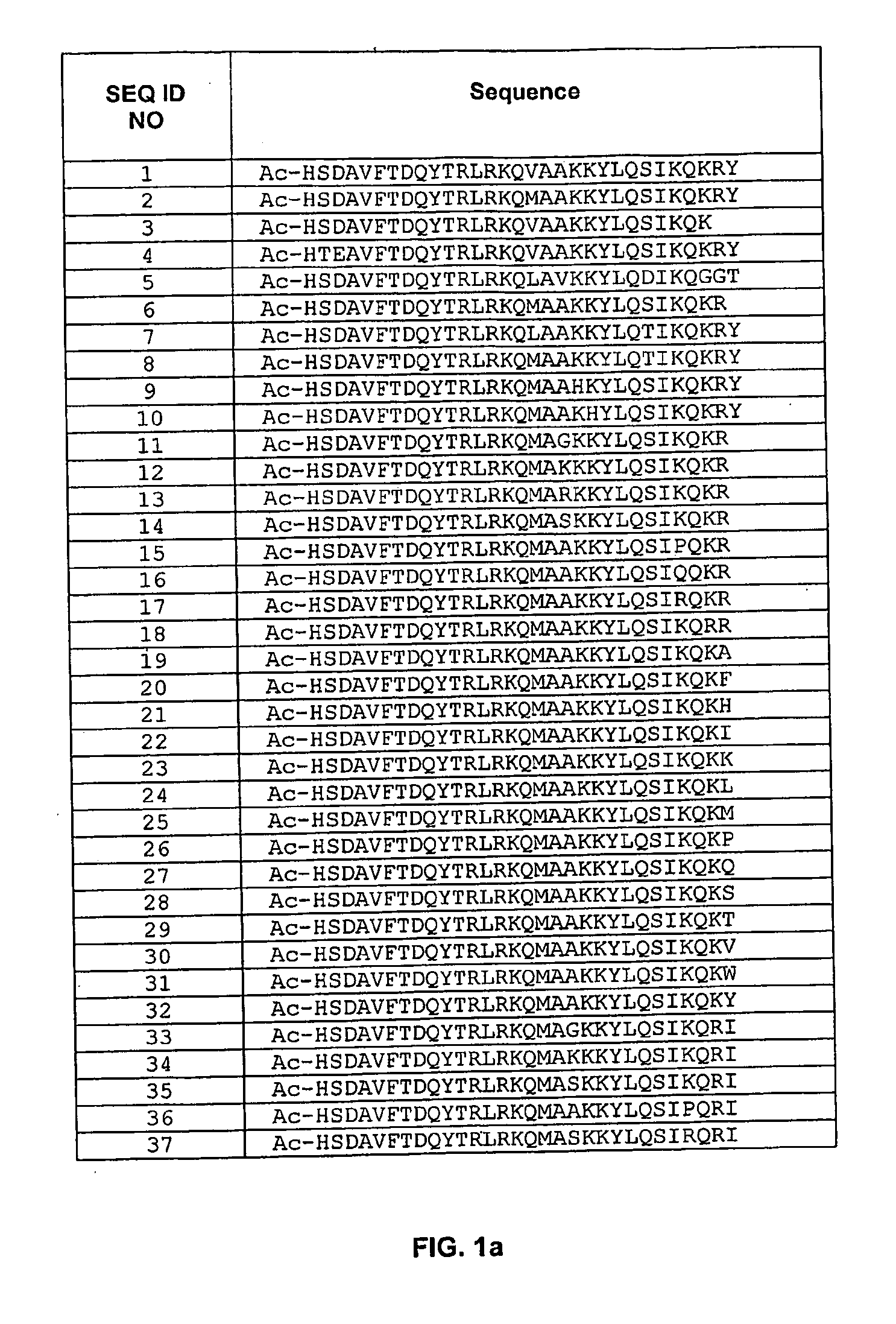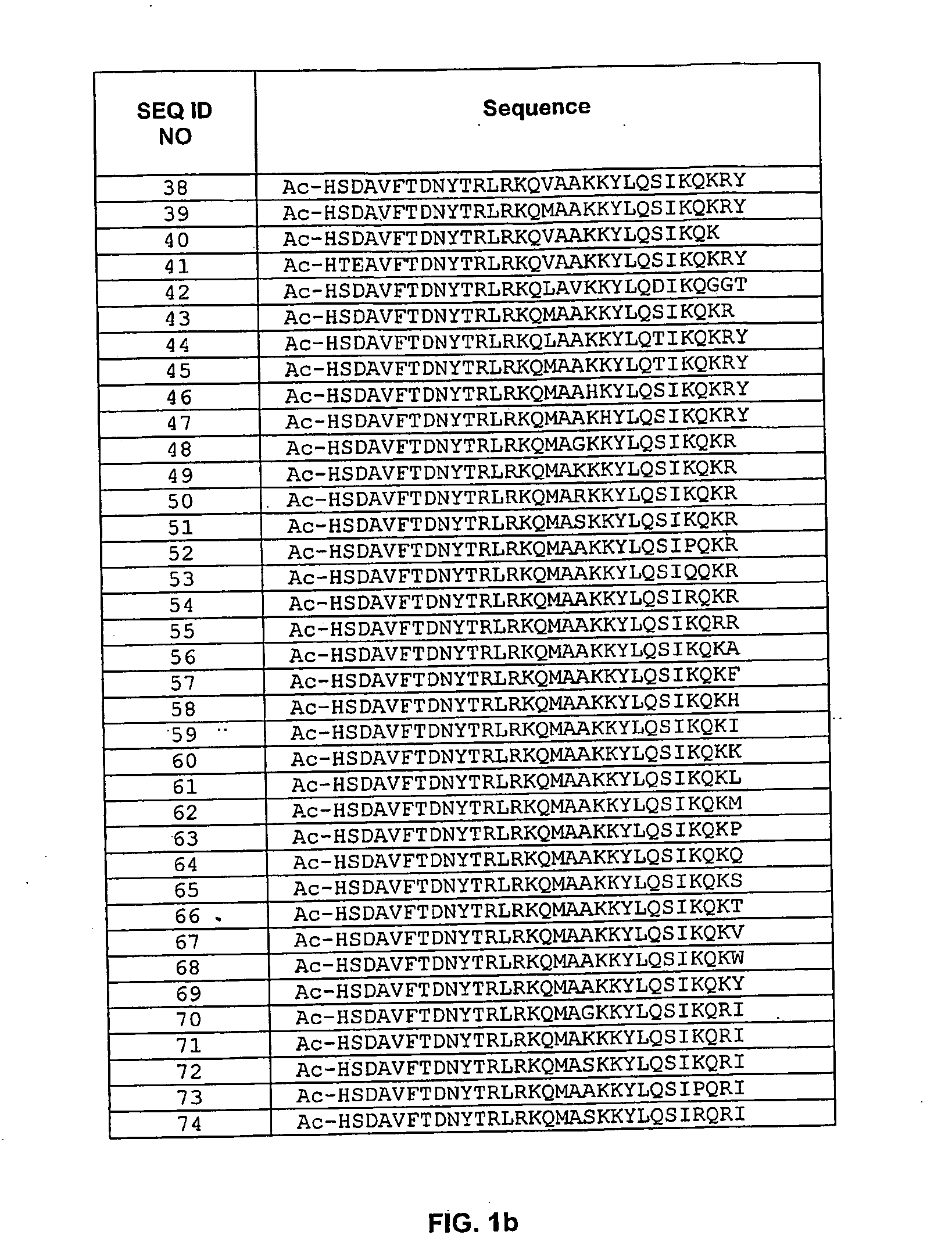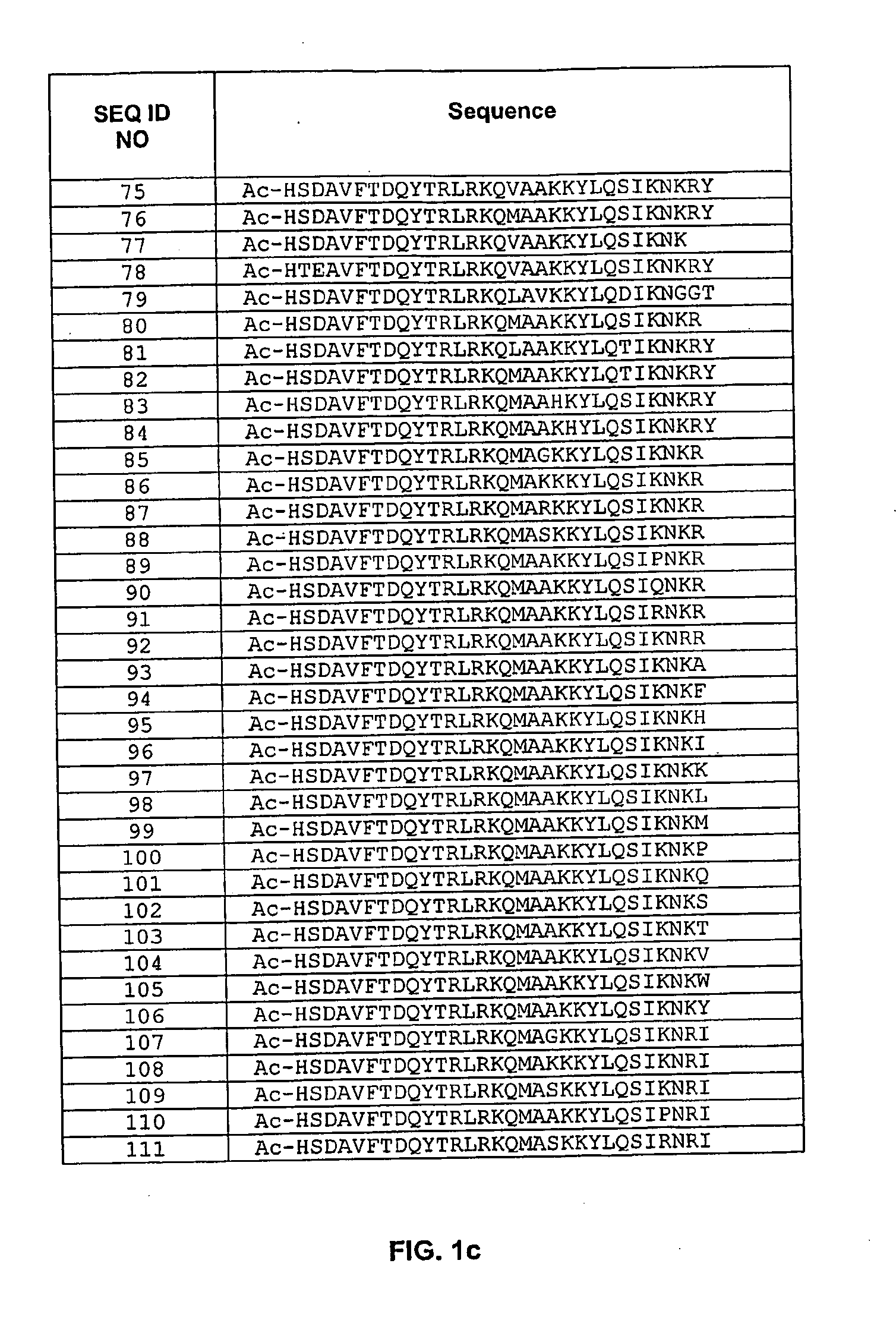Pituitary Adenylate Cyclase Activating Peptide (PACAP) Receptor (VPAC2) Agonists and Their Pharmacological Methods of Use
- Summary
- Abstract
- Description
- Claims
- Application Information
AI Technical Summary
Benefits of technology
Problems solved by technology
Method used
Image
Examples
example 1
Peptide Synthesis Methodology
[0135]The following general procedure was followed to synthesize some of the polypeptides of the invention:
[0136]Peptide synthesis was carried out by the FMOC / t-Butyl strategy (Pennington & Dunn, Peptide Synthesis Protocols, Volume 35, 1994) under continuous flow conditions using Rapp-Polymere PEG-Polystyrene resins (Rapp-Polymere, Tubingen, Germany). At the completion of synthesis, peptides were cleaved from the resin and de-protected using TFA / DTT / H2O / Triisopropyl silane (88 / 5 / 5 / 2). Peptides were precipitated from the cleavage cocktail using cold diethyl ether. The precipitate was washed three times with the cold ether, and then dissolved in 5% acetic acid prior to lyophilization. Peptides were checked by reversed phase chromatography on a YMC-Pack ODS-AQ column (YMC, Inc., Wilmington, N.C.) on a Waters ALLIANCE® system (Waters Corporation, Milford, Mass.) using water / acetonitrile with 3% TFA as a gradient from 0% to 100% acetonitrile, and by MALDI mas...
example 2
Peptide Acetylation
[0137]Peptides were synthesized by standard methods well known in the art. Peptides were synthesiszed with an Applied Biosystems 430A peptide synthesizer using FMOC chemistry with HBTU activation on Rink amide resin and the N-terminus was acetylated with acetic anhydride. The peptide was cleaved with 84.6% TFA, 4.4% phenol, 4.4% water, 4.4% thioanisol, and 2.2% ethanedithiol. Peptides were precipitated from the cleavage cocktail using cold tertbutylmethyl ether. The precipitate was washed with the cold ether and dried under argon. Peptides were purified with reversed phase C18 chromatography with linear water / acetonitrile gradients containing 0.1% TFA. Peptide identity was confirmed with MALDI and electrospray mass spectrometry and with amino acid analysis.
example 3
Peptide PEGylation
[0138]The half-life of a peptide in vivo may be increased through attachment of a polyethylene glycol (PEG) moiety to the peptide thereby reducing clearance of the peptide by the kidney and decreasing protease degradation of the peptide. The use of a VPAC2 receptor agonist peptide is severely limited by its very short half-life in vivo; however, attachment of a PEG moiety to the peptide (PEGylation) prolonged the half-life of the peptide sufficiently to allow for once / day to once / week treatment.
[0139]PEGylation may be performed by any method known to those skilled in the art. However, in this example, PEGylation was performed by introducing a unique cysteine mutation into the peptide followed by PEGylating the cysteine via a stable thioether linkage between the sulfhydryl of the peptide and maleimide group of the methoxy-PEG-maleimide reagent (Nektar (Inhale / Shearwater), San Carlos, Calif.; NOF, Tokyo, Japan). The unique cysteine may be introduced at the C-terminus...
PUM
| Property | Measurement | Unit |
|---|---|---|
| Chemical shift | aaaaa | aaaaa |
| Capacitance | aaaaa | aaaaa |
| Electrical resistance | aaaaa | aaaaa |
Abstract
Description
Claims
Application Information
 Login to View More
Login to View More - R&D
- Intellectual Property
- Life Sciences
- Materials
- Tech Scout
- Unparalleled Data Quality
- Higher Quality Content
- 60% Fewer Hallucinations
Browse by: Latest US Patents, China's latest patents, Technical Efficacy Thesaurus, Application Domain, Technology Topic, Popular Technical Reports.
© 2025 PatSnap. All rights reserved.Legal|Privacy policy|Modern Slavery Act Transparency Statement|Sitemap|About US| Contact US: help@patsnap.com



